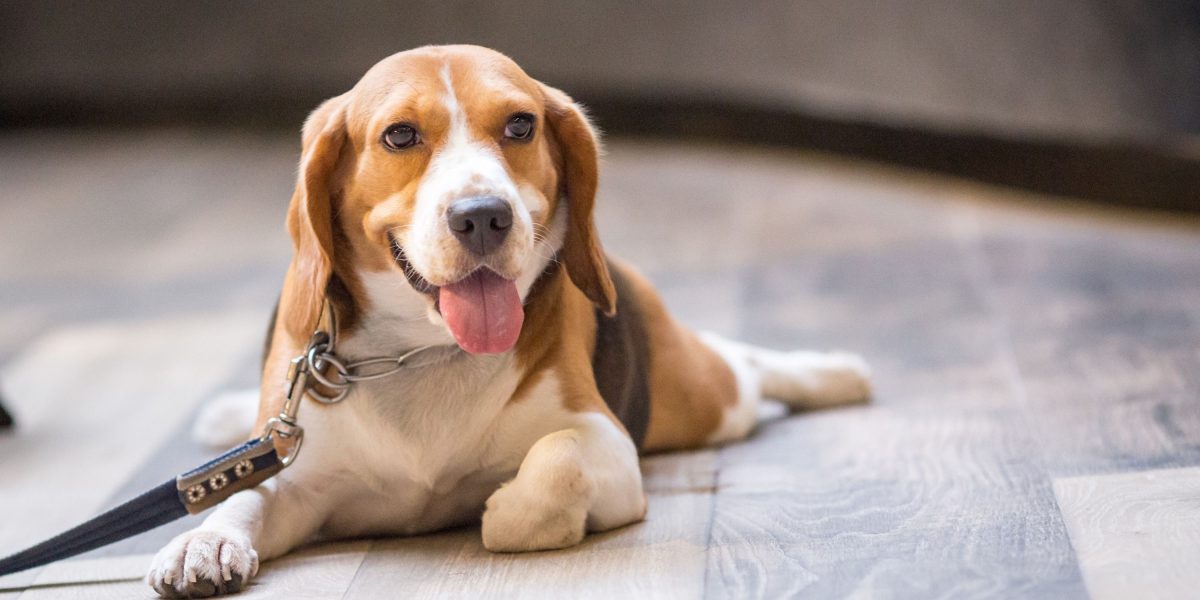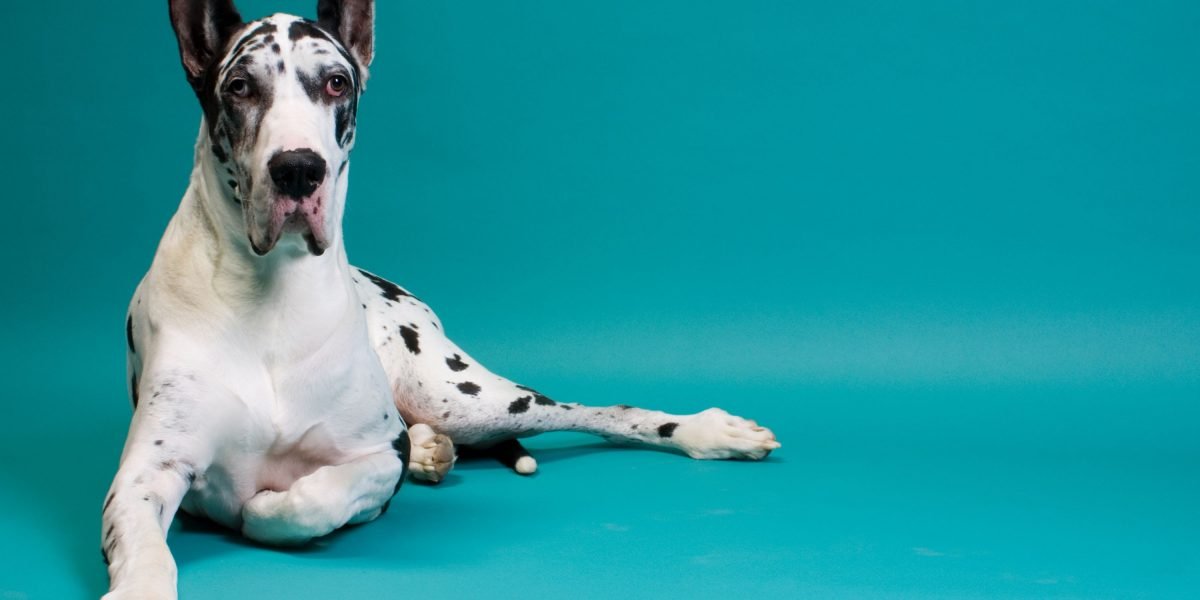Our furry friends are inundated with quirks, especially those involving the positions they lay in. The internet is full of pictures and videos of dogs laying with their legs flat out in a position known as “dog splooting.” But is this position comfortable for dogs? And can it be a sign of discomfort?
Over time, some pet parents have raised concerns about dog splooting being an indicator of joint problems. So here, we will discuss the act of dogs splooting, what it means for your pup, and what you can do if there appears to be a problem. Read on with us today to find out more!
What Is Dog Splooting?
The “sploot” occurs when your dog stretches out with one or both legs behind its body. While the Corgi may be famous for its splooting tendencies, all dog breeds will display this behavior. There are also several reasons why your dog might exhibit this behavior, ranging from harmless to a sign of discomfort – you know what’s normal for your pup and can spot unusual behavior right away.
Some pet parents give names to the different “types” of splooting that their pooches engage in. These include the “classic” type, where one leg stays under the body while the other is stretched back. In the “side” type, one leg stays under the body while the other is out to the side, often while the dog is laying with their hip on the ground. Then, the “full” sploot occurs when both legs are stretched out behind the body in a full stretch.
You may also find other terms for dog splooting such as:
- Pancaking
- Flooping
- Supermanning
- Drumsticks
- Turkey or chicken legs
Why Do Dogs Sploot?
Your dog might lay with its hind legs out behind it for many reasons. These include resting, relaxing, cooling off, and discomfort. Other factors may come into play like your dog’s age and breed. No matter the cause, any pet parent will agree that the act of splooting is undeniably cute!
Age
Young puppies may sploot more often than adult dogs due to their flexibility. When they are growing, growing puppies have loose joints and their bones are more pliable. This is why young puppies often seem uncoordinated as they run from place to place. It’s also why many young puppies will flop onto the ground in a splooting position with their legs splayed out, especially after a tiring play session!

Rest
Your dog is an energetic and active family friend who needs plenty of exercises. Splooting is one way for them to stretch their muscles after moving, potentially providing some relief. You may find your pup splooting after a vigorous walk as they cool down and regain their energy. Your dog will lay down in many other positions to relax, including laying with its head on its paws, laying on its side, and curling up for warmth.
Relaxation
Some dogs will sploot to relax. While the position may look uncomfortable at times, it’s likely an effective way for them to take weight off of their limbs and stretch their muscles. This can be a sure sign that your pup feels right at home, as this position is particularly vulnerable for them – without their legs under their body, it would be more difficult for them to get up and run away from danger.
Cooling Off
In warmer weather, some dogs will sploot in order to cool down. You’ll notice them doing this on a cool surface like tiles or hardwood floors on hot days. Be sure to monitor your pooch for signs of heat exhaustion during hot weather, as heat exhaustion can progress very quickly to a life-threatening condition called heatstroke. The signs of heatstroke include excessive panting, dry gums, lethargy and collapse. Be sure to get your furry friend to the vet right away if you spot any of these symptoms!
elevated breathing rates, dry or sticky gums, abnormal gum color, bruising in the gums, may appear lethargic or disoriented and can have seizures.
Attention
As with any dog behavior, positive reinforcement through your attention will encourage actions like splooting. Your furry friend is always seeking your approval, so giving them more attention when they sploot will encourage them to do it again. The same principle applies to any other behavior – when you reward behaviors you want to see, your dog will remember to act similarly to get another reward.
Trust
When your dog sploots, it can be a sign of trust towards you – especially when they do this with their backside towards you. A dog who lays facing away from you is showing you that they feel safe in your company – you quite literally have their back! Because dogs who sploot have their legs out from under their body, it takes them more time to jump up and into action – so laying in this position also signals trust in this way as well.
Pain and Discomfort
Some dogs will assume this position as a way to relieve the discomfort of a bone or muscle disorder. Trauma, hip dysplasia, or osteoarthritis in your dog’s body could cause them to sploot to find relief from their pain, rather than putting pressure on the affected body part. If your pooch shows other signs of discomfort or illness, always speak to your vet right away. Consider your dog’s age and breed as factors that might increase its risk of joint disorders. As well as this, consider if your dog has sustained an injury to their limbs recently – this can cause your dog to lay in odd positions too.
What Dog Breeds Can Sploot?
Most dog breeds will lay down with their legs stretched out behind them, but those that are smaller and more flexible tend to do it most often. As such, this behavior is commonly associated with Corgis, Shiba Inus, French Bulldogs, Chihuahuas, Beagles, and Staffordshire Bull Terriers. You’ll also find the behavior is more common in young puppies due to their greater flexibility.

For larger and heavier breeds, the act of splooting may be more difficult to accomplish. This is, in part, due to their long limbs and heavier burden on their joints. However, this does not mean that large breeds cannot sploot like their smaller counterparts! A quick internet search will inundate you with pictures of Rottweilers, Great Danes, and Wolfhounds splooting just like their smaller cousins.

When Should You Be Concerned
As with most dog behaviors, splooting can become a cause for concern if done in excess or accompanied by symptoms of illness or discomfort. If your dog isn’t a splooter, and suddenly begins to display the behavior often, be sure to monitor them for signs of illness. As always, changes in your dog’s behavior are a key indicator that something is amiss with their health.
Hip Dysplasia
In dogs, hip dysplasia is a deformity of the hip joint. During your dog’s growth, the ball and socket in the pelvis must grow at an equal rate. In the case of hip dysplasia, this uniform growth fails to occur. This causes looseness of the joint, which in turn leads to osteoarthritis as the body attempts to stabilize the joint. In the beginning, weakness in the hind legs is characteristic of the disease. Some dogs become reluctant to climb stairs or jump. Your dog may also be reluctant to get up from a sitting or lying position. So, due to weakness of the hind legs, or in an attempt to shift the discomfort, some dogs will lay with their hind legs splayed out behind them. You may find that your dog favors their unaffected hip when lying down.
The following breeds are more prone to hip dysplasia than others according to the PDSA:
- Labrador Retrievers
- German Shepherds
- Rottweilers
- Bernese Mountain Dogs
- Newfoundlands
Osteoarthritis
Osteoarthritis is the most common type of arthritis in dogs. This is a common joint disease involving the loss of joint cartilage, which causes pain and limb dysfunction. Much like with hip dysplasia, your dog might show symptoms including reluctance to stand, inability to jump, and changes in gait. Your dog may also become stiff, lame in the affected leg, or show signs of discomfort or aggression when the affected joint is moved. To take pressure off of the affected joints, your dog may lay with its hind legs splayed out. You may find that your dog favors doing this on one side or on their belly compared to how they normally lay down.
The following breeds are especially prone to osteoarthritis according to studies:
- Golden Retrievers
- Labrador Retrievers
- Rottweilers
- German Shepherds
- Border Collies
- English Springer Spaniel
- Boxers
Ataxia
Ataxia means something is not coordinating in the nervous system. In short, ataxia can mean abnormal movement of the legs, the head, or the entire body. There are several types of ataxia depending on which parts of the nervous system are affected, and there are many illnesses that can cause ataxia as a symptom. The most obvious sign of ataxia is an abnormal gait, wherein your dog is very unsteady on its feet. Affected dogs may stand with their feet far apart to stay upright. And, due to this lack of coordination in the limbs, some dogs will lay down with their legs flat out behind them from their inability to keep steady.
The following breeds are more prone to ataxia than others:
- German Shepherds and Pembroke/Welsh Corgis (degenerative myelopathy)
- Giant and large breeds (fibrocartilaginous embolus)
- Boxers, Golden Retrievers, Doberman Pinschers (brain tumors)
- Golden Retrievers, Doberman Pinschers, Irish Setters, Cocker Spaniels (hypothyroidism)
- Airedales, Chow Chows, Boston Terriers (cerebellar hypoplasia)
Swimmer Puppy Syndrome
Another issue that can cause “splooting” like behavior is swimmer puppy syndrome. This is a developmental deformity of newborn puppies whereby the hind limbs splay out under them. This results in an inability to stand or walk. In some cases, puppies can be assisted through the syndrome to the point of standing and walking, though this takes environmental modifications and regular physiotherapy. When planning to breed dogs, it’s crucial that you research syndromes such as swimmer puppy syndrome so that you are equipped for these scenarios.
The following breeds are more prone to swimmer puppy syndrome than others:
- English Bulldogs
- French Bulldogs
Injury
When your dog feels pain and discomfort, they may assume the posture of splooting. If such a condition is present, then you should search for the reason behind this problem and try to address it.
What Should You If Your Dog Always Sploots
You know your pup best, so you know what’s normal for them already. Splooting maybe your dog’s favorite resting position, especially if they are a breed that is well known for the behavior. However, if your dog suddenly begins to display this behavior and it’s out of character for them, it’s important to monitor their health closely, especially if they are a breed that is prone to osteoarthritis and hip dysplasia.
Whenever you have any concerns about your dog’s health, your first port of call should always be to your vet. Explain your dog’s symptoms, including any signs of discomfort and pain. These might include lameness, reluctance to exercise, inability to climb or jump, and withdrawal from people. Some dogs will also go off their food when they are struggling with pain and discomfort. Whatever the case, your dog’s prognosis will be best with early intervention!
Signs that your dog’s splooting is normal for them to include:
- Your dog does not show signs of pain when its joints are moved
- It’s done after exercise to cool down
- They are very young and still growing
- They are in a calm setting and relaxing with you
- Your dog knows they’ll get attention for splooting
Signs that your dog’s splooting may be abnormal for them include:
- Your dog is in pain when you move their joints
- Your dog suddenly starts to sploot when they didn’t before
- They walk with an abnormal gait, favor one limb, or are lame
- Your dog walks stiffly
- They struggle to stand from a lying position
- Your dog falls into the position often, seeming unsteady
- Whining in the splooting position
- Your dog often sploots after exercise
Tips for Pet Owners
Consider providing your dog with a comfortable bed or cozy resting area to encourage relaxation. Pay attention to your dog’s unique preferences and behaviors to ensure they feel secure and content. Keep an eye on your dog’s splooting habits and be alert to any changes, as this could be an early indicator of discomfort or pain. We encourage you to seek professional veterinary advice if you notice any unusual or concerning behavior in your furry friend.
Conclusion
In short, dog splooting is a common and charming behavior in our pets. While it’s usually harmless and a sign of comfort, excessive splooting, especially with signs of discomfort, can be a red flag for underlying health issues. It’s essential for pet owners to stay vigilant and consult a vet if they notice any concerning changes in their dog’s splooting habits. Understanding your dog’s unique behaviors is crucial for their well-being and happiness.
Dog Splooting: FAQs
Have any more questions or concerns about dog splooting? Feel free to check out our Frequently Asked Questions! If in doubt about your dog’s health, always contact your vet for advice.
For most dogs, splooting is normal behavior. It simply involves laying down with the hind legs stretched out behind or to the side of the body. For many dogs, this position is comfortable and helps them to cool off or stretch their muscles. However, some dogs will sploot to alleviate discomfort in their joints. Watch for signs of health issues like osteoarthritis, hip dysplasia, and ataxia in your pooch if they start to exhibit this behavior and it is unusual for them. Dogs who sploot often, alongside signs of pain or discomfort, may be struggling with pain that needs veterinary attention.
There are many reasons why dogs lay down with their legs out behind them. Firstly, many dogs will do this to relax, and it may be a sign that your pup is comfortable and feeling at home. However, it can also be a sign that your dog is struggling with a bone or joint disorder when done in excess or accompanied by worrisome symptoms. Always monitor your dog for signs of ill health.
Some dogs don’t sploot due to a lack of flexibility. If your dog is older and has stiff joints, they may not be able to lay down as flexibly as a younger dog. Some larger, heavier breeds may also struggle to lay in this position due to their size. However, this does not mean that all large breeds cannot lay down in this position. Many larger dogs will still manage to sploot despite their size and weight.
Dogs lay in many positions, each with its own meaning. For example, when your dog sleeps with their head on top of its paws, it’s often a sign that they are dozing and not in a deep sleep. Similarly, a dog who sleeps curled up into a ball may do so to feel less vulnerable and to keep warm. And, each dog is an individual with its own preferences, so your dog will have a favorite position to lay or sleep in!
Pitbull-type dogs are among the most common dogs you’ll find in pictures of dogs splooting. Alongside these dogs include Corgis, Shiba Inus, and Chihuahuas. These breeds are relatively small and flexible compared to others, which makes splooting much easier for them to accomplish. As well as this, these breeds are highly active, so stretching their muscles will aid them in more play time later on!
Dog splooting is one of the cutest and most famous behaviors our furry friends get up to. They sploot to cool down, to relax, and to show trust in you. However, excessive splooting alongside worrisome symptoms can also signal a bone or joint disorder. Always talk to your vet if you have concerns about your dog’s health.
